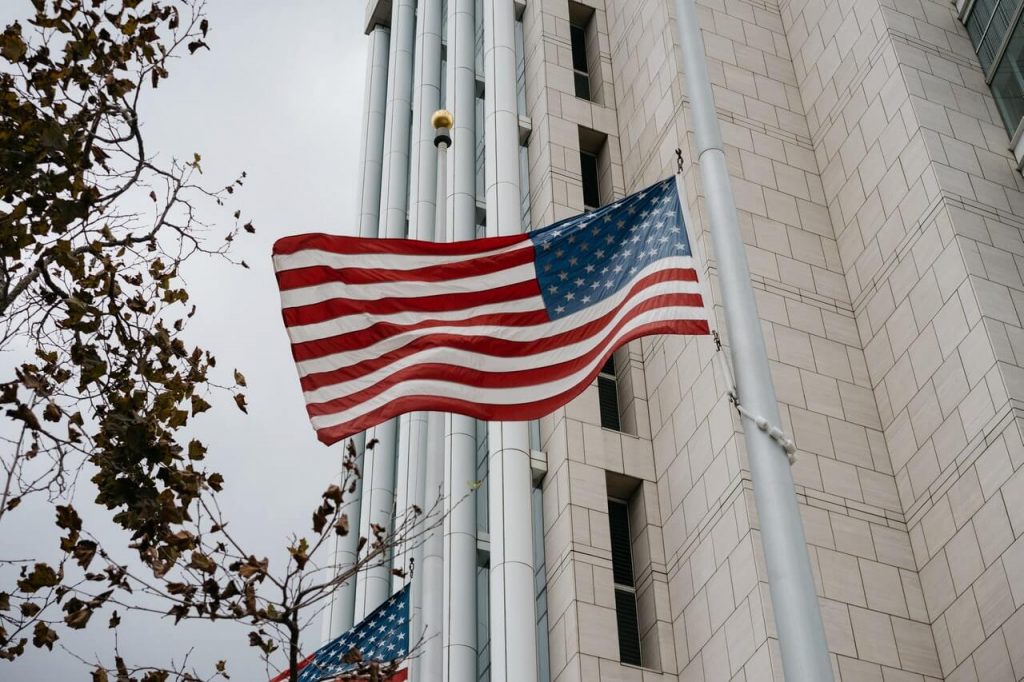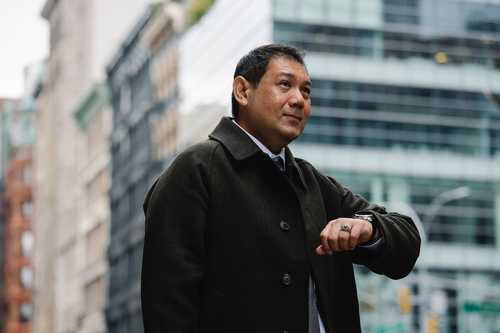Navigating the Green Card Marriage Process
The United States offers its citizens and lawful permanent residents the wonderful opportunity to live permanently together with their foreign spouses by applying for a green card through marriage. A marriage permanent resident card obtained through the sponsorship of a U.S. citizen or a lawful permanent resident (LPR) gives the immigrant the right to work and live in the United States freely and legally, in some cases even after the marriage has ended. It also gives foreign nationals the opportunity to become full U.S. citizens after five years of permanent residence (three if the U.S. spouse is a citizen).
However, the entire green card marriage process can be quite complex and notoriously difficult to navigate on one’s own, which is why firms like ours exist. Pandev Law has spent years collecting knowledge and gaining experience in order to help immigrants in a diverse range of situations succeed in their first step towards achieving the American Dream.
What is a marriage-based green card?
A marriage-based green card allows the spouse of a U.S. citizen or permanent resident to live and work anywhere in the United States. This type of green card grants the holder “permanent resident” status, which means they can reside permanently in the U.S. without needing to renew their visa periodically.
In addition to the right to live and work in the U.S., permanent residents can travel in and out of the country more freely compared to those on temporary visas. They are also eligible for certain benefits, such as social security and Medicare, once they meet the required criteria.
After three years of marriage to the U.S. citizen or permanent resident sponsor, the green card holder may apply for U.S. citizenship, provided they meet other eligibility requirements, such as continuous residence and good moral character. This path to citizenship offers a way for families to stay united and for the spouse to fully integrate into American society with the same rights and responsibilities as natural-born citizens.
I offer confidential 30 minute & 1 hour consultations.
Schedule a consultation
How long is the green card marriage process?
As of January 2024, the processing time for a marriage-based green card is approximately 9-10 months. However, this timeframe can vary based on several factors. The specific processing time may be influenced by the location of the applicant, the accuracy and completeness of the submitted application, and the current workload of the U.S. Citizenship and Immigration Services (USCIS).
What is the cost of the green card marriage process?
The cost for applying for a marriage-based green card varies depending on whether the couple resides within the United States or if one or both spouses are living outside the country. For couples living in the United States, the total cost is approximately $3,005. This includes the fees for filing Form I-130 (Petition for Alien Relative), Form I-485 (Application to Register Permanent Residence or Adjust Status), the biometrics fee, and other associated costs. For couples where one or both spouses live outside the United States, the total cost is approximately $1,340. This includes the fee for filing Form I-130 and the consular processing fee, which covers the cost of submitting Form DS-260 (Immigrant Visa Application) and the required medical examination.
It’s important to note that these costs can vary based on individual circumstances and additional expenses such as translation of documents, legal fees if an attorney is hired, and travel expenses for attending interviews or medical examinations. Applicants should budget for these potential additional costs and stay informed about any changes to USCIS fees, which can occur periodically.
How to Get a Green Card Through Marriage
The most simplified version of a summary for the green card through marriage process highlights three main steps:
- Demonstrating relationship authenticity by filling out and submitting Form I-130 (USCIS Form I-130), Petition for Alien Relative. This is a critical green card through marriage process step.
- Confirming eligibility and applying for the green card (USCIS Form I-485 or DS-260, depending on the location of the foreign national).
- Getting interviewed and waiting for updates.
This article will help you gain a better understanding of the step by step green card process through marriage outlined above as well as answer some frequently asked questions that our firm receives from our clients during the development of their green card marriage cases.

Recap of Key Components of a Complete I-130 Package
To ensure your I-130 petition is thorough and complete, include the following essential elements:
- Government Filing Fee: The current fee for filing the I-130 petition is $675. Make sure to include this payment with your application.
- Proof of Sponsoring Spouse’s U.S. Citizenship or Permanent Residency:
- U.S. Citizenship: Provide a copy of the sponsor’s birth certificate, naturalization certificate, or the photo page of a valid U.S. passport.
- Permanent Residency: Submit a copy of the sponsor’s green card.
- Evidence of a Legally Valid Marriage: Include a marriage certificate that details the names of both spouses, along with the location and date of the marriage. This document is crucial to demonstrate the legality of your marriage. If you aren’t yet married and learn about a fiance visa application.
- Evidence of a Genuine Marriage: To show that your marriage is authentic and not entered into for immigration purposes, provide documents such as:
- Joint lease or mortgage agreements
- Joint bank account statements
- Photographs of the couple together at various events and locations
- Proof of Termination of Any Previous Marriages: If either spouse was previously married, include documentation proving that those marriages have ended. This typically involves divorce decrees or annulment papers.
By meticulously assembling these documents, you can strengthen your I-130 petition and help ensure a smoother processing experience.
How Long Does the I-130 Petition Process Take?
The processing time for Form I-130, Petition typically averages around 12 months however this is an estimate the time frame can vary case to case.
Several factors can influence the actual processing time:
- Service Center Workload: Different USCIS service centers have varying caseloads, which can affect how quickly they process petitions. Some centers may be faster, while others may have longer wait times due to higher volumes of applications.
- Completeness of Application: Submitting a complete and accurate application with all required documentation can help avoid delays. Incomplete forms or missing documents can result in requests for additional information, which can prolong the processing time.
- Backlogs and Policy Changes: Occasional backlogs or changes in immigration policies can impact processing times. For instance, an increase in the number of applications or changes in immigration law can lead to longer wait times.
- Background Checks and Security Clearances: Extensive background checks and security clearances may be required for some applicants, potentially extending the processing period.
To stay informed about your petition’s progress, consider using services like Track My Visa Now. These tools offer real-time updates and forecasts based on the latest data, helping you manage your expectations and plan accordingly. While the average processing time is around 12 months, being aware of these variables can help you better understand and navigate the I-130 petition process.
I offer confidential 30 minute & 1 hour consultations.
Schedule a consultation
Before the Green Card Through Marriage Process Begins
Although it is possible to apply for a green card through marriage and sponsor your loved one all on your own, it is highly inadvisable to do so. Attempting to go through the green card via marriage process without the guidance of an experienced immigration attorney is risky and could result in a denied petition even if your situation would suggest otherwise.
The process of filling out the forms, gathering and organizing the necessary supporting documents, addendums, and letters can be quite difficult for a person without any knowledge on the topic, and dealing with requests for evidence and notices of intent to deny can be challenging without a lawyer on your side. Therefore, we strongly encourage all future applicants to seek the counsel of an immigrant attorney who has enough expertise and experience to guide you on your immigration journey and assist you with the green card through marriage process.
Eligibility for a Marriage Green Card Application
Before delving into the steps in the marriage-based green card process, there are a few crucial requirements that must be fulfilled. The couple must be eligible to apply for a green card through marriage, and this requires that:
- The couple must be legally married. The couple must be legally married and officially recognized as such by the state or country in which the marriage happened. This ceremony typically results in an official document (marriage certificate) that serves as proof for the U.S. authorities that the marriage is legal.
- The couple must be in a bona fide non-fraudulent relationship. The marriage and the underlying relationship must be bona fide, in other words, a real, non-fraudulent relationship. Any relationship that was based solely on an attempt to get a green card is considered fraudulent and would result in the immediate denial of the couple’s green card application.
- One of the spouses must be a U.S. citizen or a lawful permanent resident. Arguably the most important and crucial requirement is that of the U.S. citizenship or permanent residence of the sponsoring spouse. All other visa holders are disqualified (for example, H-1B visa holders).
- The marriage must be the only marriage they are into. The marriage must be the only marriage either spouse is currently into. If either of them was previously married, then they must provide evidence that their marriage ended legally (usually in divorce but possibly after the death of the previous spouse or an annulment).
Once you have confirmed you meet the eligibility requirements you can then begin the green card through marriage process.
Essential Documentation for a Marriage Green Card Process
Gathering the necessary documentation is a crucial initial step in the green card through marriage process. Below is a guide to the documents you should begin to assemble.
- Official Marriage Certificate: This is a certified copy of the document issued by a government authority that legally recognizes your marriage. Ensure it is properly notarized and, if not in English, translated by an authorized translator.
- Divorce Decree from Previous Marriages (if applicable): If either spouse was previously married, you must provide official documentation proving that those marriages have been legally dissolved. This includes divorce decrees or annulment papers, properly certified and translated if necessary.
- Proof of Legal Entry into the U.S. (Beneficiary): The beneficiary (the non-U.S. citizen spouse) must show proof of lawful entry into the United States. This typically includes a copy of the visa and the I-94 arrival/departure record. These documents confirm that the entry into the U.S. was legal and documented.
- Birth Certificate (Beneficiary): An official copy of the beneficiary’s birth certificate is required. This document should be in English or accompanied by a certified translation if originally issued in another language.
- Proof of U.S. Citizenship (Sponsor): The sponsoring spouse, who is a U.S. citizen, must provide evidence of their citizenship. Acceptable documents include a U.S. passport, birth certificate, certificate of naturalization, or certificate of citizenship.
- Evidence of Genuine Marriage: To demonstrate that your marriage is bona fide, gather evidence that shows the authenticity of your relationship. This can include joint financial statements, lease or mortgage agreements, photographs of your life together, affidavits from friends and family, and any other documentation that illustrates your shared life.
By organizing these documents early in the process, you can streamline your application and avoid potential delays. Each piece of evidence plays a critical role in substantiating your marriage and your eligibility for a green card.

Applying for Green Card Through Marriage
Step 1: Demonstrating Relationship Authenticity by Filling Out and Submitting Form I-130
The first and most important step in the green card through marriage process is filling out and submitting the Petition for Alien Relative, also known as Form I-130. The U.S. citizen sponsoring the immigrant submits this form to the U.S. Citizenship and Immigration Services (USCIS). As previously mentioned, the purpose of this form is to demonstrate and establish that the relationship, and consequently the marriage, is authentic and valid.
The actual filing package for Form I-130 should include a variety of documents and other supporting evidence, in addition to the actual filled-out form and the government fee of $625. The petitioner (or their lawyer) should make sure to include:
- Proof that the sponsor is a U.S. citizen or lawful permanent resident.
- Support statement from the petitioner.
- Two color passport photos of each spouse.
- Proof that the marriage is bona fide and not a fraudulent attempt to obtain a green card.
- Proof that the marriage itself is legally recognized via a marriage certificate.
- Documentation to prove that any previous marriages ended legally.
After the filing package for Form I-130 is organized and complete, the petitioner must mail it to the USCIS address. Once the package is received by the agency, they will send back a receipt notice to notify the petitioner that their application was received and is now being processed by a USCIS officer.
In some situations, USCIS sends back a request for evidence (RFE), which signals to the petitioner that the package didn’t contain enough information for them to make a final decision. The current waiting time for Form I-130 is between 7 and 15 months, although some circumstances might warrant quicker or slower processing of the case. The immigration marriage process time can vary so it is best to consult your attorney rewarding the current wait times they are experiencing.
Step 2: Confirming Eligibility and Applying for the Green Card
This next step in the immigration marriage process is entirely dependent on the status of the foreign national spouse and where they are currently residing. If the foreign spouse is living abroad, they will need to apply for “consular processing.” Meanwhile, if they are living in the United States and currently hold a nonimmigrant status, they will need to apply for “adjustment of status.” Selecting the correct green card through marriage process is critical.
Green Card Marriage Process: Adjustment of Status
The adjustment of status process involves several crucial steps, the most important of which is the filling out and filing of Form I-485, Application to Register Permanent Residence or Adjust Status. Similar to Form I-130, the actual Form I-485 package should include several supporting documents like the filing fees of $1,440 and:
- Proof of nationality of the immigrant beneficiary.
- Proof of the beneficiary’s physical and mental health via a medical exam conducted by a doctor approved by USCIS.
- Proof that the foreign national spouse entered the United States lawfully.
- Proof that the applicant (the U.S. citizen or LPR spouse) has the financial means to support the immigrant spouse.
If the sponsoring spouse is a U.S. citizen, this step can be combined with the filing of I-130, and the processing time is around 9-11 months. The same is not true for spouses of LPRs, who need to wait for USCIS’s confirmation that there is a green card available.
After filing the Form I-485 package, the applicant will need to wait for a notice from USCIS informing the spouse about the biometrics services appointment at a local Application Support Center (ASC). USCIS will require the immigrant to provide fingerprints, a photograph, and/or a signature.
Green Card Marriage Process: Consular Processing
If the immigrant applying for a green card through marriage is currently living outside the United States, they will need to go through consular processing and file an NVC filing package, which includes a green card application that is supposed to be filed online (Form DS-260) and the government fees of $445 (including both the immigrant visa fee and the affidavit of support fee).
The usual waiting time is around 3 to 5 months before the National Visa Center (NVC) sends the application package to a consulate or U.S. embassy nearest to the foreign spouse’s place of residence. Once the couple has received a notice from the NVC that their Form I-130 application was approved, the foreign national spouse will need to wait for a notice informing them that a visa number is about to become available. Once the visa number is issued, the completion of the green card process takes around 4 to 6 months.
Step 3: Getting Interviewed and Waiting for Updates
The specifics of this step of applying for a green card through marriage once again depend on the beneficiary’s location. If the beneficiary is residing lawfully in the United States, then they will need to wait for USCIS to determine whether an interview is actually necessary for that specific case. If they determine it is, then an interview will be scheduled, and the immigrant will be required to appear at the USCIS office mentioned in the interview notice.
If the beneficiary is residing outside the United States, they will be interviewed in their own country, without their U.S. citizen or LPR spouse. As soon as the visa is available, the consular office at the nearest U.S. consulate will schedule an interview and process the case, deciding whether the person is eligible for an immigrant U.S. visa or not. If the spouse’s green card is approved, the next step is receiving a visa stamp in their passport to travel to the U.S. The immigrant will also need to pay an immigrant fee of $235 online before the physical green card can be issued.
Green Card Marriage Process: Concurrent Filing
There is a possibility to file the Form I-485 package and the Form I-130 package concurrently in the green card via marriage process. To be allowed to file both petitions, the U.S. spouse must be a U.S. citizen. Concurrent filing is not allowed for lawful permanent residents at this time. Concurrent filing cannot occur if the foreign national is undergoing consular processing either.
I offer confidential 30 minute & 1 hour consultations.
Schedule a consultation
Essential Items in an I-485 Filing Package
When preparing your I-485 application, also known as the Application to Register Permanent Residence or Adjust Status, it is vital to include all necessary elements to ensure a smooth and timely processing. Below is alist of critical components that must be part of your I-485 filing package, presented in a new order:
- Proof of Lawful Entry into the United States: The spouse seeking a green card must provide evidence of their lawful entry into the country. This typically includes a copy of the I-94 travel record and any prior U.S. visas. These documents confirm that the entry was legal and documented.
- Proof of Nationality for the Spouse Seeking a Green Card: Include a copy of the applicant’s birth certificate and the photo page of their passport. These documents serve as proof of nationality and identity.
- Proof of Financial Support by the Sponsoring Spouse: The sponsoring spouse must demonstrate their ability to financially support the spouse seeking a green card. This includes:
- Form I-864 (Affidavit of Support): This form is a legally binding document in which the sponsor agrees to financially support the immigrant.
- Supporting Financial Documents: Evidence such as recent tax returns, pay stubs, W-2 forms, and employment letters should be included. These documents help establish the sponsor’s financial stability and capability to support the beneficiary.
- Medical Examination: A medical examination performed by a USCIS-approved doctor is required. The results of this examination must be submitted in a sealed envelope provided by the physician to ensure it remains confidential and tamper-proof. The medical exam ensures that the applicant does not have any health conditions that would make them inadmissible to the United States.
- Government Filing Fees: The total filing fees amount to $2,330. This includes $1,140 for the green card application itself, along with additional fees for biometrics and other related services.
By meticulously assembling and organizing these components, you can help ensure that your I-485 application is complete and accurately represents your case. Proper preparation reduces the likelihood of delays and increases the chances of a successful adjustment of status to permanent residency.
Necessary Items in an NVC Filing Package
When preparing your National Visa Center (NVC) filing package, ensuring that all required documents and fees are included is crucial for a smooth processing experience. Below is an expanded list of the essential components needed for a complete NVC filing package:
- Government Filing Fees: The total fees amount to $445, which includes:
- $120 for the Affidavit of Support (Form I-864): This form is required to demonstrate the sponsor’s financial capability to support the applicant.
- $325 for the State Department Processing Fee: This fee covers the processing of the green card application by the State Department.
- Form DS-260 (Immigrant Visa Application): The DS-260 is the online green card application form that must be completed and submitted electronically. Ensure that all sections of the form are accurately filled out, as any discrepancies can lead to delays.
- Proof of Nationality for the Spouse Seeking a Green Card: This includes a copy of the applicant’s birth certificate and the photo page of their passport. These documents serve as proof of nationality and identity, confirming the applicant’s eligibility.
- Police Clearance Certificate: A police clearance certificate is required for the spouse seeking a green card. This document should provide a record of any interactions with law enforcement in the applicant’s home country and any country where they have resided for six months or more since the age of 16. The certificate should be recent and officially translated into English if issued in another language.
- Proof of Financial Support by the Sponsoring Spouse: The sponsoring spouse must demonstrate their ability to financially support the spouse seeking a green card. This includes:
- Form I-864 (Affidavit of Support): This form is a legally binding document where the sponsor agrees to financially support the immigrant.
- Supporting Financial Documents: Provide evidence such as recent tax returns, pay stubs, W-2 forms, and employment letters. These documents help establish the sponsor’s financial stability and capability to support the beneficiary.
- Additional Supporting Documents: Depending on your specific case, additional documents may be required, such as:
- Marriage Certificate: To prove the legitimacy of the marriage.
- Divorce Decrees or Death Certificates: If either spouse has been previously married, these documents prove that the prior marriage has legally ended.
- Photos and Communication Records: To further establish the genuineness of the relationship, you may include photos together and records of communication.
By carefully assembling and organizing these components, you can help ensure that your NVC filing package is complete and accurately represents your case. Proper preparation reduces the likelihood of delays and increases the chances of a successful visa application process.
After the Marriage Green Card is Received
After the immigrant spouse becomes a lawful permanent resident and the couple is finally allowed to live in the United States together as a family, most clients wonder what happens next. Depending on the length of marriage, the spouse will receive one of two types of green cards – a permanent green card or a conditional one.
If the couple has been married for less than two years, the immigrant will receive what is known as a CR1 or a conditional green card. Such green cards are valid for two years only. After the two-year period has ended, the couple will need to file together Form I-751, Petition to Remove Conditions on Residence. This filing must occur 90 days before the expiration of the conditional green card. It is necessary to remove the conditional part of the green card and receive a permanent green card instead. When USCIS receives Form I-751, the officers processing the application will look over the couple’s marriage and evaluate its authenticity once again.
For these conditional green card holders, it’s vital to remember the timeline for filing Form I-751 to remove conditions. Additionally, the immigrant spouse should apply for a Social Security number if they don’t already have one, which is essential for employment and accessing various benefits. It’s also important to be aware of the naturalization process. After three years of holding a green card, if married to a U.S. citizen, the foreign spouse may be eligible to apply for U.S. citizenship. Staying informed about these subsequent steps ensures that the transition to permanent residency and eventually citizenship is smooth and successful.
If the couple has been married for over two years, the spouse immediately receives a permanent green card, also known as an IR1. It is valid for 10 years and can be renewed rather easily in most situations, without requiring the couple to go through a reevaluation of their marriage’s authenticity. If there are children involved please refer to this article “Green Card for Children” for more information on applications for children. Similarly if you would like to learn more about green cards for parents here is some helpful information: “Green Card for Parents“
Common Mistakes to Avoid in the Green Card Marriage Process
Navigating the green card via marriage process can be tricky, and applicants often make common mistakes that can delay or jeopardize their applications. One frequent error is failing to provide sufficient evidence of a bona fide marriage. Couples should submit ample documentation, such as joint bank statements, lease agreements, and photographs, to demonstrate the authenticity of their relationship. Another common mistake is submitting incomplete or incorrect forms. Even minor errors can lead to delays, so it’s crucial to carefully review all paperwork before submission. Additionally, neglecting to respond promptly to requests for additional evidence from USCIS can cause significant delays. Seeking the assistance of an experienced immigration attorney can help applicants avoid these pitfalls.
Importance of Preparing for the Green Card Interview
The interview is a critical component of the green card through marriage process, where both spouses are questioned about their relationship. Preparation is key to ensuring a successful outcome. Couples should review their submitted documents and be ready to answer questions about their relationship history, daily routines, and future plans. It’s essential to be honest and consistent in your responses, as discrepancies can raise red flags. Practicing common interview questions with your spouse can help alleviate anxiety and ensure you present a unified and genuine account of your relationship. An immigration attorney can provide valuable guidance on how to prepare effectively for this crucial step.
Financial Considerations in the Green Card Marriage Process
Financial stability plays a significant role in the green card marriage process. The sponsoring spouse must demonstrate the ability to support the immigrant spouse, ensuring they will not become a public charge. This involves submitting Form I-864, Affidavit of Support, along with supporting documents like tax returns, pay stubs, and employment verification. It’s essential to meet the income requirements set by USCIS, which are based on the federal poverty guidelines. Couples should carefully review these guidelines to ensure they meet the necessary criteria. In some cases, a joint sponsor may be required if the sponsoring spouse’s income is insufficient.
Importance of Following The Green Card Process Steps Marriage
Understanding the step by step green card process through marriage requires thorough preparation and attention to detail. Each step of the marriage based green card process is crucial and must be handled with care. From gathering necessary documentation to attending interviews, every phase has its own set of challenges. Couples should familiarize themselves with the green card process after marriage to ensure a smooth and successful application.
The Green Card Process Through Marriage: Legal and Practical Insights
The marriage based green card process involves both legal and practical considerations. Legally, couples must comply with all immigration regulations and ensure their documentation is accurate and complete. Practically, they must prepare for interviews and possible follow-up requests from USCIS. Understanding the green card process steps marriage and staying organized throughout the application can significantly improve the chances of approval.
Additional Insights on the Immigration Marriage Process
The immigration marriage process is not just about paperwork; it’s about proving the authenticity of your relationship. Throughout the green card application process through marriage, couples must be prepared to demonstrate their genuine bond through various forms of evidence. This includes shared financial responsibilities, joint ownership of property, and detailed accounts of their life together. The process of getting green card through marriage is rigorous but manageable with the right preparation and legal support.
Enhancing Your Green Card Via Marriage Process Experience
To enhance your experience with the green card via marriage process, it’s important to stay organized and proactive. Keep a checklist of all required documents and deadlines to avoid any last-minute issues. The green card via marriage process can be smoother with clear communication between spouses and a thorough understanding of what USCIS expects. Regularly updating your legal advisor about any changes in your situation can also help in navigating the green card via marriage process effectively.
Summary of the Green Card Application Process Through Marriage
The green card application process through marriage involves multiple stages, each with specific requirements. Starting with the submission of Form I-130 to prove the legitimacy of the marriage, followed by either consular processing or adjustment of status, and concluding with an interview, the journey is comprehensive. By understanding each step of the green card application process through marriage, couples can better prepare and increase their chances of a successful application.
Understanding the marriage visa process is essential for couples seeking to live together in the United States. The marriage visa process involves several stages. The marriage visa process can be complex, but with the right preparation and legal guidance, couples can successfully navigate it and achieve their goal of obtaining a green card.
Although the process of getting green card through marriage can be daunting but understanding these steps and preparing thoroughly can significantly increase the chances of a successful application. By staying informed and seeking legal advice when needed, couples can navigate the marriage based green card process with confidence and ease.
Final Thoughts: The Green Card Process Steps Marriage
Navigating the green card marriage process is complex and requires careful planning, attention to detail, and adherence to legal requirements. By understanding the process of getting green card through marriage and being aware of the common pitfalls, couples can successfully achieve their goal of living together in the United States.
Seeking the assistance of an experienced immigration attorney can provide invaluable support and guidance throughout the green card marriage process, ensuring that every step is handled efficiently and effectively. The green card process steps marriage entail a series of well-defined stages that demand careful attention and thorough preparation. A skilled attorney will be your guide throughout this process. From the initial application to the final interview, each step plays a crucial role in determining the outcome of your green card process after marriage. Being well-prepared and informed about the green card process steps marriage can make all the difference in achieving a favorable result.
I offer confidential 30 minute & 1 hour consultations.
Schedule a consultation
Resources for Further Information
For more detailed guidance on the green card marriage process, consider consulting the USCIS website, which is an authoritative source for official forms, eligibility criteria, and processing times.
Our Marriage Green Card Services
Are you a US citizen or LPR who is looking up ways to sponsor your foreign spouse? Does a customized approach to your immigration case sound interesting to you? Would you like to learn more about our marriage-based immigration USA services? Are you searching for an immigration lawyer near you? Pandev Law, LLC has years of experience in immigration law. We have the knowledge and expertise to guide you through your marriage-based immigration case and help you begin your new life as a family in the United States!
If you would like to schedule a consultation with our immigration attorney, follow the link and click on “Schedule a Consultation.” You can also reach us via email at [email protected], or call us at (646) 354-3780.
During your consultation, our immigration lawyer will provide an honest assessment of your case, as well as a recommendation regarding your next steps.
Disclaimer: This blog article is provided by Pandev Law, LLC for general educational and informational purposes only. Although this article discusses general legal issues, it does not constitute legal advice nor does it establish an attorney-client relationship. No reader should act or refrain from acting on the basis of any information presented in this article, or elsewhere on this website, without seeking the advice of appropriate legal counsel, or other professional counsel, licensed in the relevant jurisdiction. Pandev Law, LLC expressly disclaims any and all liability with respect to any actions taken, or not taken, based on any content of this article or website. This blog article may constitute attorney advertising. Prior results do not guarantee a similar outcome.














